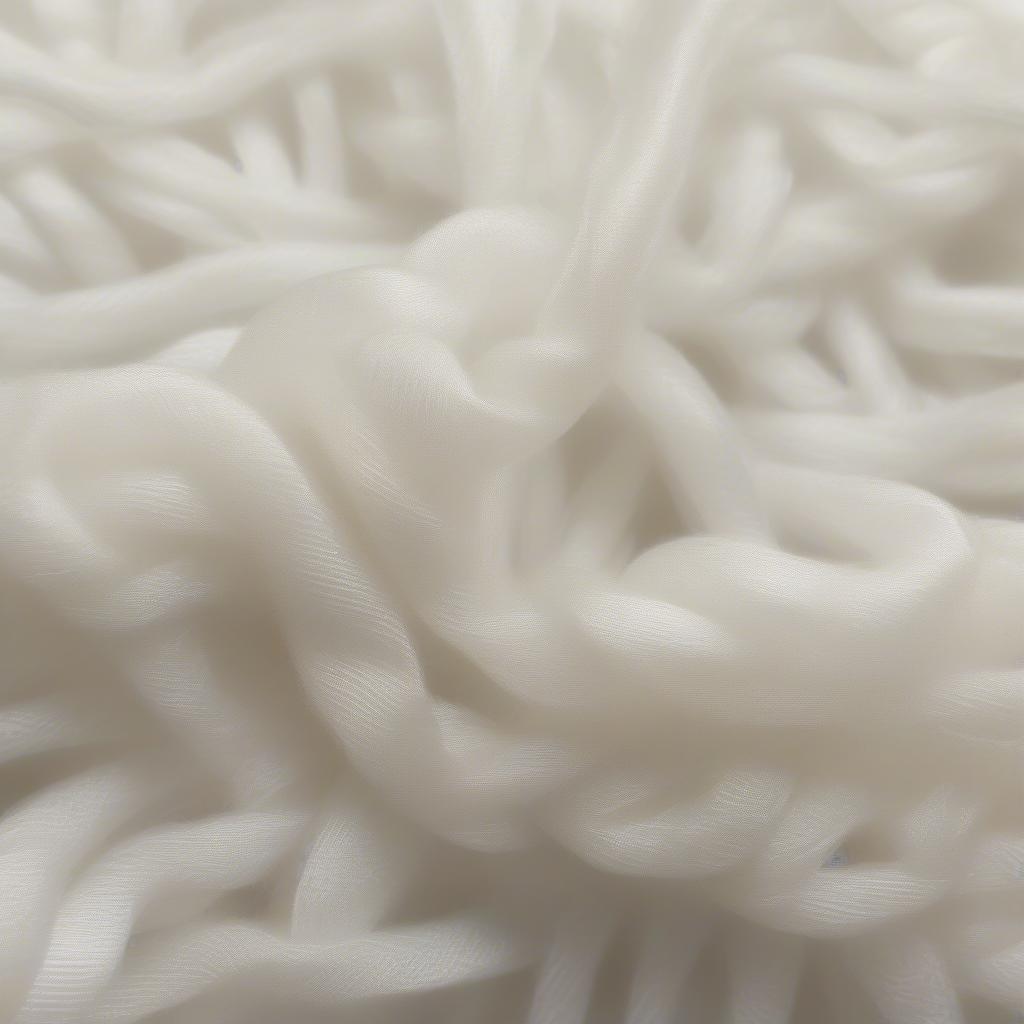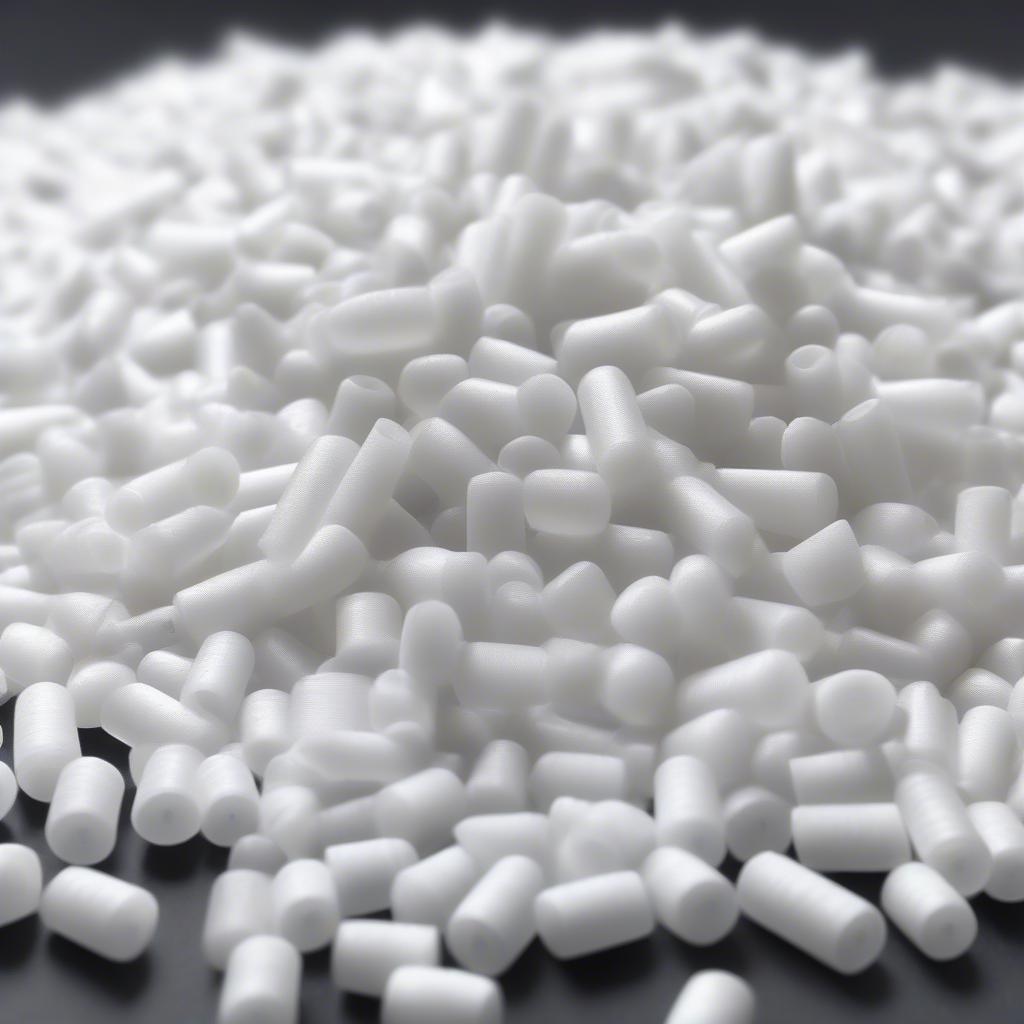Woven Bag
What is a Non-Woven Bag Made Of?
Non-woven bags have become increasingly popular as a reusable and eco-friendly alternative to plastic bags. But what exactly are these bags made of? This article will delve into the materials, manufacturing process, and various types of non-woven bags, providing a comprehensive understanding of what makes them unique.  Close-up view of the fibrous structure of a non-woven polypropylene bag
Close-up view of the fibrous structure of a non-woven polypropylene bag
Decoding the “Non-Woven” Fabric
Unlike traditional woven fabrics like cotton or jute, non-woven materials are not created through the interlacing of yarns. Instead, they are formed by bonding fibers together through mechanical, thermal, or chemical processes. This creates a fabric-like material that is both strong and flexible.
The most common material used in non-woven bags is polypropylene (PP). This thermoplastic polymer is derived from petroleum and offers several advantages for bag production. It’s lightweight, durable, water-resistant, and relatively inexpensive. non woven handle bag making machine made in china
Polypropylene: The Workhorse of Non-Woven Bags
Polypropylene’s versatility makes it an ideal choice for non-woven bag manufacturing. Its inherent strength allows the bags to carry a substantial amount of weight, while its water resistance protects the contents from moisture. Additionally, polypropylene can be easily colored and printed on, allowing for customized designs and branding.
Another material sometimes used is spunbond polypropylene, which offers even greater strength and durability. This material is created by bonding continuous filaments of polypropylene together, resulting in a smoother, more uniform fabric.
 Raw polypropylene pellets used in non-woven bag production
Raw polypropylene pellets used in non-woven bag production
Manufacturing Process of Non-Woven Bags
The creation of non-woven bags involves several steps. First, the polypropylene pellets are melted and extruded into long, thin fibers. These fibers are then laid out in a web-like structure. The next step involves bonding the fibers together. This can be achieved through various methods, such as thermal bonding (using heat and pressure), chemical bonding (using adhesives), or mechanical bonding (using needles or water jets). non woven suit cover bag made in china Finally, the bonded fabric is cut and sewn into the desired bag shape, adding handles and other features as needed.
Variations and Additives
While polypropylene is the primary material, other materials and additives can be incorporated to enhance the properties of non-woven bags. For example, calcium carbonate can be added to increase stiffness and opacity. Recycled materials are also becoming more common, contributing to the sustainability of non-woven bags. curtain bag made of recycled pp non-woven
Different Types of Non-Woven Bags
Non-woven bags come in a variety of styles and sizes, each suited for a particular purpose. Tote bags, shopping bags, promotional bags, and even garment bags can be made from non-woven fabrics. flexo printing plates 2.28mm for non-woven bag made in china The versatility of the material allows for customization in terms of size, shape, handle type, and printing options.
 Different types and colors of non-woven bags
Different types and colors of non-woven bags
Conclusion: A Sustainable Choice
Understanding what non-woven bags are made of allows consumers to make informed decisions about their reusable bag choices. Made primarily from polypropylene, these bags offer a durable, water-resistant, and cost-effective alternative to single-use plastic bags, contributing to a more sustainable future. non woven garment storage bags made in china
FAQ
- Are non-woven bags recyclable? Yes, many non-woven bags are recyclable, particularly those made from pure polypropylene.
- How long do non-woven bags last? With proper care, a non-woven bag can last for several years.
- Are non-woven bags biodegradable? While standard polypropylene non-woven bags are not readily biodegradable, there are biodegradable options available.
- Can non-woven bags be washed? Yes, they can be hand washed or machine washed on a gentle cycle.
- What are the advantages of using non-woven bags? They are durable, reusable, water-resistant, and often more affordable than other reusable bag options.
- Are non-woven bags strong enough for groceries? Yes, they are designed to carry a significant amount of weight.
- What is the difference between woven and non-woven bags? Woven bags are made from interlaced yarns, while non-woven bags are made from bonded fibers.
Situations involving questions about non-woven bags:
- A shopper at a grocery store asks the cashier about the material of the reusable bags they offer.
- A business owner researches different types of promotional bags for an upcoming event.
- A consumer looking for eco-friendly alternatives to plastic bags researches the composition of non-woven bags.
Further Reading and Related Questions:
- What are the different types of reusable bags available?
- How can I customize non-woven bags for my business?
- What are the environmental benefits of using non-woven bags?
Contact us for further assistance: Hanoi, Vietnam or Tech Avenue, Suite 12, San Francisco, CA 94105, USA. We have a 24/7 customer support team.
